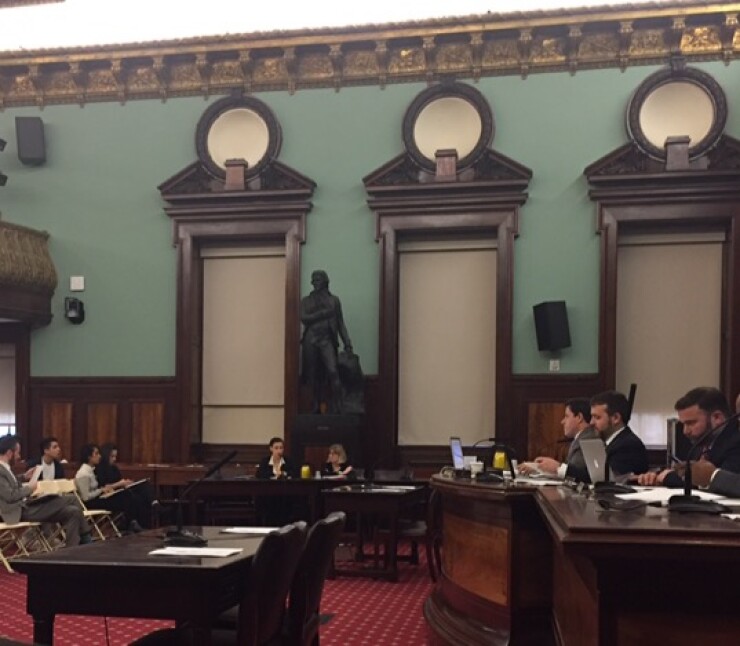The federal government’s attempt to restrict international travel from several Mid-Eastern countries could cost the city and state of New York over $100 million in lost tax revenue this year, the New York City Council was told on Thursday.
Testifying before the Council’s Economic Development Committee at City Hall, Donna Keren senior vice president at NYC & Co., said the company's revised forecast shows that international visitors would decline more than 2% this year, off significantly from the 3% growth originally predicted at the end of 2016.
A 2% drop in visitors means 300,000 fewer foreign tourists in 2017, she said.

“Even at this modest level of decline, we estimate that at an average spend of $2,000 each, overall spending by international visitors could drop by $600 million, resulting in the city and state collectively earning $120 million less in tax revenue related to international spending this year,” Keren said.
While foreign tourism was declining, she said, visitors from around the U. S. were coming to New York City.
“We also predict that 2017 domestic visitation to NYC will increase by 1.3 million visitors compared to last year, or 2.7%,” Keren said. “As a result overall visitation and visitor spending in NYC should increase this year compared to last year, but is unlikely to reach its full potential under existing conditions.”
While international travelers make up 20% of all visitors to New York City, she said, they account for over 50% of all traveler spending.
President Trump has signed two executive orders banning travel from several Muslim-majority countries for 90 days. The first order was blocked by the courts and the second involving six countries has been halted with restraining orders. The countries affected are Iran, Libya, Somalia, Sudan, Styria and Yemen.
“At our core, we are a nation of immigrants,” said committee chair Councilman Daniel Garodnick, D-District 4. “Yet the message this travel ban sent is that foreigners are no longer welcome.”
He said that the recent restrictions on using some electronic devices during flights to the U.S. from 10 airports in the Middle East and North Africa could hurt the city’s economy in the long run.
“New York City is a major hub for international banks and consulting firms, many of whom do substantial business in the Middle East,” Garodnick said, “If those firms suffer drops in efficiency because their employees or executives cannot work while in travel – we will see less travel. We will see less economic activity. And we will suffer the losses in taxes and jobs.”
Foreign tourism has been estimated to generate about $250 billion in economic activity in the U.S. each year.
New York City is the number one No. 1 point of entry for foreign visitors In 2016 60.7 million people visited New York City, 12.7 million of them from outside the country.
“Travel and tourism is NYC’s sixth largest employer,” Keren said. “More than 375,000 people have jobs supported by visitor spending, which generates more than $5.8 billion in tax revenue for the city and state each year.”
New York City has responded with several initiatives to counter the executive orders on travel, Bitta Mostofi, assistant commissioner at the Mayor’s Office of Immigrant Affairs testified.
“First, we have directly responded to and contested the orders,” she said. “Through our national coalition of mayors, called Cities for Action, we’ve responded strongly against federal anti-immigrant policies by leading legal efforts, releasing coordinated statements and letters by municipal leader and meeting with inter-governmental partners.”
Garodnick called for a balance between being safe and being smart.
“While we certainly appreciate the federal government’s concerns regarding safety and security," he said. "These same security concerns need to be addressed in a less haphazard way.”





